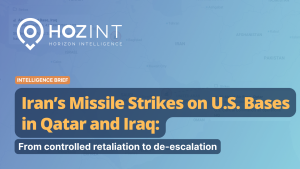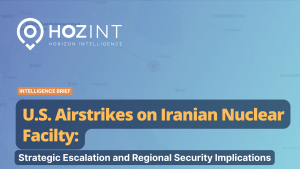In today’s information-driven world, gathering accurate and timely intelligence is crucial for strategic decision making. Open Source Intelligence (OSINT) plays a vital role in this process by providing valuable insights from publicly available information. This blog post explores the importance of OSINT in strategic intelligence, its benefits, and practical steps to implement OSINT strategies effectively.
Benefits of OSINT for Strategic Decision Making
OSINT offers numerous advantages when it comes to strategic decision making:
Access to Diverse Information: OSINT allows access to a wide range of sources, including social media platforms, online forums, news articles, and government databases. This diverse information landscape provides a comprehensive understanding of the operating environment.
Timeliness and Agility: With real-time updates, OSINT enables organisations to stay updated on emerging trends, threats, and opportunities. It helps in adapting strategies swiftly, making informed decisions promptly.
Cost-Effectiveness: Compared to traditional intelligence methods, OSINT is relatively cost-effective. It eliminates the need for expensive proprietary databases or hiring specialised analysts, as the information is readily available.
Implementing OSINT Strategies for Strategic Intelligence
To effectively leverage OSINT for strategic intelligence, follow these key steps:
a. Identify relevant sources for gathering OSINT: Determine the sources that are most relevant to your organisations objectives. This may include social media platforms, websites, blogs, forums, academic research, or industry reports.
b. Establish effective data collection and management processes: Develop a systematic approach to collect and manage OSINT data. Use tools like web scrapers, RSS feeds, or data aggregators to automate data collection and ensure a streamlined process.
c. Utilise OSINT tools and techniques for analysis: Leverage OSINT tools and techniques to analyse and extract meaningful insights from the gathered data. This may involve data visualisation, sentiment analysis, geospatial mapping, or network analysis.
d. Verify and validate gathered information: Validate the reliability and accuracy of the gathered information by cross-referencing multiple sources. Use fact-checking tools, consult subject matter experts, or employ geolocation techniques to verify data authenticity.
e. Synthesise and present findings in a meaningful way: After analysing the OSINT data, synthesise the key findings into actionable intelligence. Identify patterns, trends, and correlations to derive insights that contribute to strategic decision-making. Present the findings in a clear and concise manner, using visualisations, reports, or presentations that effectively communicate the information to stakeholders.
Real-World use cases
OSINT can be used to assess the risks and opportunities of operating in a certain country or region, based on historical and current data. Some examples of practical uses of OSINT for strategic intelligence are:
– Monitoring the political and social stability of a country, such as the level of civil unrest, human rights violations, corruption, or terrorism. This can help identify potential threats or opportunities for business, diplomacy, or security.
– Evaluating the economic and environmental conditions of a country, such as the GDP growth, inflation, trade balance, natural resources, or climate change. This can help determine the market potential, competitiveness, or sustainability of a country.
– Comparing the military and technological capabilities of a country, such as the size and strength of the armed forces, the development and deployment of weapons systems, or the innovation and research activities. This can help assess the strategic posture, deterrence, or vulnerability of a country.
Open Source Intelligence (OSINT) is a valuable resource for strategic intelligence. By leveraging OSINT effectively, organisations can access diverse information, make timely decisions, and achieve cost-effective intelligence gathering. Implementing OSINT strategies involves identifying relevant sources, establishing data collection processes, utilising analysis tools, verifying information, and synthesising findings. Real-world examples highlight the success of OSINT in corporate analysis and counterterrorism operations. Embrace the power of OSINT to enhance your strategic decision-making capabilities and gain a competitive edge in today’s information-driven world.




